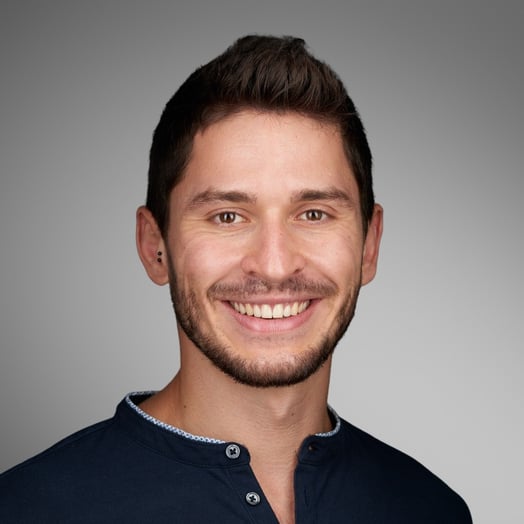
Nathanael Bloch
Verified Expert in Engineering
Computer Vision Engineer and Developer
Nathanael is a computer engineer specializing in computer vision and machine learning. With a solid skillset in mathematics, computer graphics, and 3D, he is also experienced in Python, C, C++, and Java. Nathanael is passionate about solving complex problems and creating well-designed and meticulously organized software solutions.
Portfolio
Experience
Availability
Preferred Environment
TensorFlow, Keras, NumPy, OpenCV
The most amazing...
...solution I've developed is a GPU-accelerated 3D augmentation software to generate synthetic face datasets at the speed of light.
Work Experience
Computer Vision Solutions Engineer
Datagen Technology
- Implemented supplementary layers such as SDK v1, infrared relighting model, multi-view 3D reconstruction, environment mapping, 3D camera positioning, camera calibration, and skin tone augmentations to enhance Datagen's product.
- Offered consultancy on computer vision and synthetic data to the organization, delivering valuable market insights for product development.
- Created a comprehensive collection of technical resources, including Jupyter notebooks, tutorials, and demos, to streamline the onboarding process.
Computer Vision Algorithm Engineer
Cipia
- Designed and built an AI face tracker, one of the fundamental building blocks of the company's product. It enabled the reconstruction of real-time 3D face representation from 2D videos with up to a 200% improvement in accuracy.
- Outlined a 3D image augmentation system for synthetic face data, addressing data scarcity and non-uniformity by synthesizing diverse head poses, expressions, and illuminations from a single image.
- Worked on face recognition, achieving a threefold improvement in the false positive rate.
- Developed a benchmark for head pose accuracy to provide reliable metrics to the customer.
Hardware Architecture Engineer
NVIDIA (formerly Mellanox Technologies)
- Built a fully-fledged C++ simulator for the company's network stack.
- Ran complex simulations of end-to-end network stacks.
- Analyzed the results of those simulations to define requirements for the next product generation and improve existing features.
Experience
Face Tracker
This face tracker became a vital component of the company product I was working for. The face tracker had the capability to transform 2D videos into real-time 3D face representations, providing essential information such as bounding box, landmarks, head pose and position, as well as 3DMM coefficients. Notably, this new model achieved an accuracy improvement of up to 200% compared to the previous version.
Synthetic Data Generator
To achieve this, I created and implemented various mathematical models for optimization and rendering accelerated by GPU. The system demonstrated exceptional performance, being approximately 100 times faster than existing solutions available in the market.
Face Recognition
DGUtils
https://github.com/DatagenTech/dgutilsDatagen SDK
https://pypi.org/project/datagen-tech/All the parsing and loading functions were implemented behind the scenes, and each data point was structured into a simple and easy-to-access Python object.
The SDK was backward compatible with any data version.
Infrared Relighting
The modeling was based on computer graphics and 3D principles, making the image look close to the target domain and configurable to the customer's needs.
This project was highly relevant to customers working in the infrared domain since infrared data is very hard to obtain.
Multi-view 3D Reconstruction
It provided a significant added value to customers by letting them train their neural networks on supervised 3D reconstruction, which was impossible without the 3D ground truth.
Network Simulator
The project required a high proficiency in C++ programming and debugging. A thorough understanding of complex protocols such as TCP and RoCE and the hardware at the register level was also needed.
Ultrasound Super-resolution Imaging
A neural network based on the encoder-decoder architecture remapped the raw data from the ultrasound device into a high-resolution image. It enabled a fourfold increase in the original number of pixels while keeping the original image quality so physicians could use smaller, cheaper ultrasound devices.
Education
Master's Degree in Business Administration (MBA)
Technion – Israel Institute of Technology - Haifa, Israel
Bachelor's Degree in Computer Engineering
Technion – Israel Institute of Technology - Haifa, Israel
Skills
Libraries/APIs
TensorFlow, Keras, NumPy, OpenCV, PyTorch
Languages
Python, C++
Industry Expertise
Cybersecurity
Paradigms
Management
Other
Machine Learning, Computer Vision, Computer Graphics, Data, Artificial Intelligence (AI), Computer Architecture, Networking, Signal Processing, Finance, Web Marketing, Entrepreneurship, Optimization, Rendering, 3D, Mathematics, Hardware
How to Work with Toptal
Toptal matches you directly with global industry experts from our network in hours—not weeks or months.
Share your needs
Choose your talent
Start your risk-free talent trial
Top talent is in high demand.
Start hiring